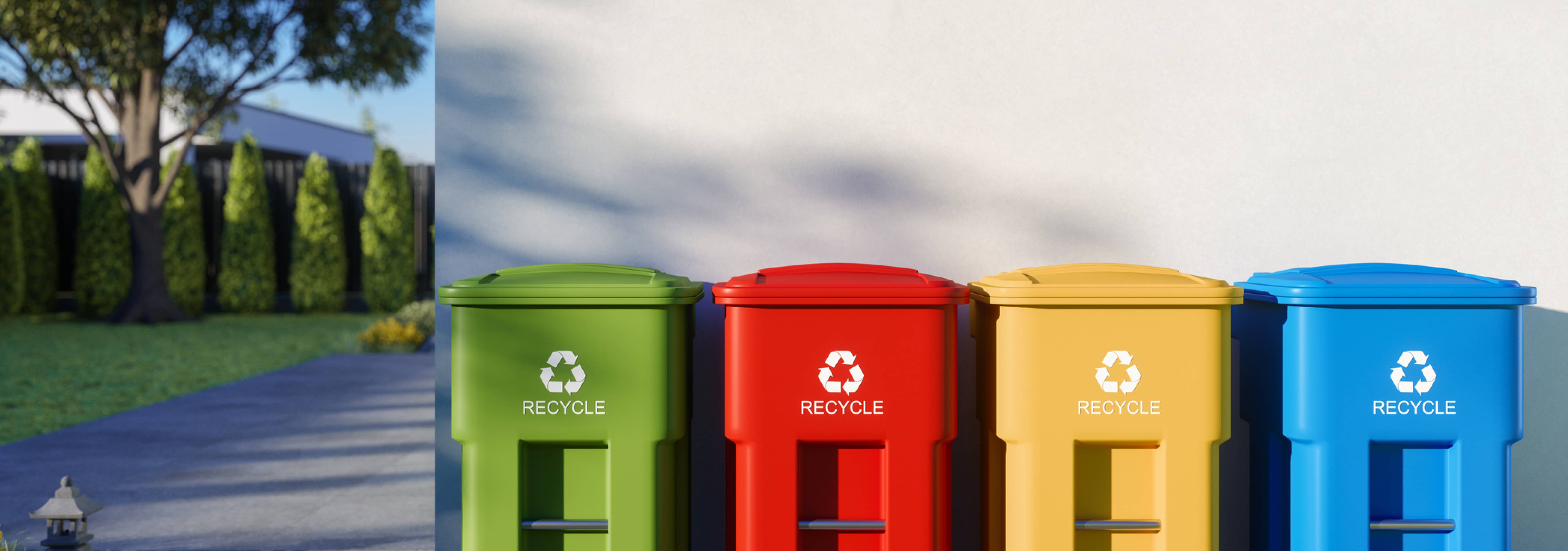Exactly How Recycling Lives Services Help In Reducing Environmental Footprints
Exactly How Recycling Lives Services Help In Reducing Environmental Footprints
Blog Article
Exploring Different Types of Waste in Modern Waste Administration Equipment
The contemporary landscape of waste monitoring includes navigating an intricate array of waste kinds, each needing specialized handling and disposal methods to alleviate ecological effects. Municipal strong waste, unsafe waste, electronic waste, and organic waste each present distinct difficulties and opportunities for resource recovery. Ingenious options such as clever waste containers and waste-to-energy innovations are becoming critical tools in improving performance and sustainability. Comprehending these waste kinds is necessary for cultivating public recognition and encouraging active engagement in lasting practices. What strategies can properly attend to these varied sorts of waste while advertising a round economic situation?
Local Strong Waste
Local solid waste, commonly referred to as house trash or garbage, encompasses a range of thrown out products generated by residential, business, and institutional resources within a town. This waste stream commonly includes items such as product packaging, food scraps, backyard trimmings, paper, plastics, textiles, and thrown out house products. The administration of local strong waste is an essential part of city preparation and public health and wellness, requiring reliable collection, transport, and disposal systems.
Efficient waste monitoring systems are made to minimize ecological influence while taking full advantage of source recuperation. Composting organic waste, such as food scraps and backyard trimmings, not just decreases garbage dump use but additionally creates useful dirt amendments.
Towns need to also attend to the logistical and financial challenges related to waste monitoring. Executing pay-as-you-throw systems, improving public awareness, and buying innovation can dramatically boost waste diversion prices. By integrating these methods, towns can promote sustainable communities, reduce greenhouse gas exhausts, and preserve natural deposits.
Hazardous Waste

Effective hazardous waste management involves numerous essential actions: recognition, disposal, segregation, and therapy. Segregation makes sure that dangerous products are kept independently from non-hazardous waste to prevent cross-contamination.
Governing frameworks, such as the Source Preservation and Recuperation Act (RCRA) in the United States, supply guidelines and requirements for dangerous waste management. Adherence to these guidelines, coupled with advancements in waste therapy technologies, is important in minimizing the dangers associated with contaminated materials.
Digital Waste
Digital waste, typically referred to as e-waste, represents a quickly expanding challenge in waste management systems globally. This kind of waste includes thrown out electronic gadgets and tools such as mobile phones, computers, tvs, and various other digital home appliances. The rapid rate of technological advancement, combined with decreasing item life expectancies and customer demand for the most recent gadgets, has actually tremendously increased the volume of e-waste created annually.
E-waste is particularly bothersome because of its complex composition, commonly containing unsafe substances like lead, cadmium, and mercury, which pose substantial ecological and health and wellness threats otherwise properly taken care of. Alternatively, e-waste additionally has useful materials such as gold, silver, and copper, which can be recuperated and recycled. The double nature of e-waste-- both valuable and harmful-- necessitates specific handling, reusing, and disposal procedures.
Reliable e-waste monitoring involves strict governing structures, durable collection systems, and advanced reusing technologies. Public understanding and engagement are essential, as incorrect disposal practices, such as unlawful discarding and casual recycling, worsen ecological contamination and wellness hazards. As a result, boosting e-waste monitoring techniques is vital for reducing environmental effect and recovering beneficial resources in a progressively digital world.

Organic Waste
Organic waste, consisting of kitchen area scraps, yard trimmings, and farming residues, stands for a considerable portion of the international waste stream. This kind of waste is naturally degradable, implying it can be damaged down by microorganisms right into simpler natural compounds. In spite of its potential for natural decomposition, improper administration of natural waste can result in negative environmental effects, consisting of the emission of greenhouse gases such as methane, which add to climate change.
Effective management of pop over here natural waste is important for reducing these environmental effects (recycling lives services). Composting is a widely adopted method, transforming organic waste into nutrient-rich garden compost that can enhance dirt health and farming efficiency. In addition, anaerobic digestion is an arising technology that converts organic waste right into biogas, a sustainable energy resource, and digestate, which can be utilized as fertilizer
Municipalities and waste monitoring entities have to carry out robust organic waste collection and treatment programs to maximize the benefits of these processes. Public education and learning projects can likewise play a critical duty in motivating families and organizations to different natural waste from other kinds of waste. By prioritizing the monitoring of natural waste, cultures can decrease garbage dump usage, lower greenhouse gas discharges, and create valuable byproducts for agricultural use.

Ingenious Waste Monitoring
In the realm of waste management, innovative approaches are changing how societies handle their refuse, intending for sustainability and performance. These developments encompass a series of modern technologies and practices that enhance recycling prices, minimize land fill dependency, and reduced environmental effect. One prominent technology is the execution of smart waste containers geared up with sensing units that monitor fill degrees and enhance collection paths. more info here This not just decreases gas intake however additionally reduces greenhouse gas emissions.
Another significant development is the adoption of waste-to-energy (WtE) innovations. By converting non-recyclable waste into functional energy through procedures such as incineration and anaerobic food digestion, WtE decreases garbage dump burden and gives an eco-friendly power source. Improvements in chemical recycling enable for the break down of complicated plastics into their initial monomers, enabling the development of new, high-quality plastic items.
Furthermore, the round economy version is gaining grip, emphasizing the layout of products and systems that focus on reusability and source performance. This holistic technique urges industries to reduce waste generation from the beginning. With these innovative methods, modern waste monitoring systems are not only resolving the instant difficulties of garbage disposal yet also leading the way for an extra sustainable future.
Verdict
A detailed understanding of Find Out More metropolitan strong waste, harmful waste, electronic waste, and organic waste, paired with the execution of cutting-edge waste monitoring services, is critical for mitigating ecological effects. Integrating innovations such as smart waste bins and waste-to-energy systems can boost performance and sustainability. Effective waste monitoring techniques not only foster resource recuperation however likewise advertise public awareness and involvement, ultimately contributing to the development of a circular economic climate.
The contemporary landscape of waste administration includes navigating a complex range of waste types, each requiring specialized handling and disposal methods to reduce environmental impacts. Community solid waste, hazardous waste, electronic waste, and natural waste each existing distinct challenges and opportunities for source recovery.Digital waste, commonly referred to as e-waste, stands for a swiftly expanding difficulty in waste administration systems internationally. With these innovative strategies, modern waste monitoring systems are not only attending to the instant challenges of waste disposal but additionally leading the method for a more lasting future.
A thorough understanding of local solid waste, hazardous waste, electronic waste, and natural waste, paired with the execution of cutting-edge waste administration services, is necessary for alleviating environmental influences. (recycling lives services)
Report this page